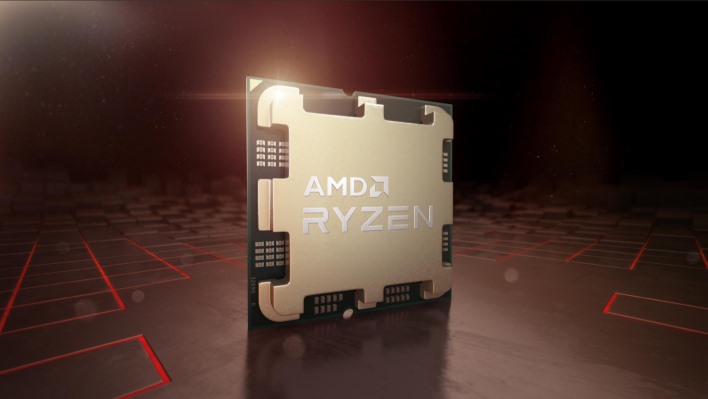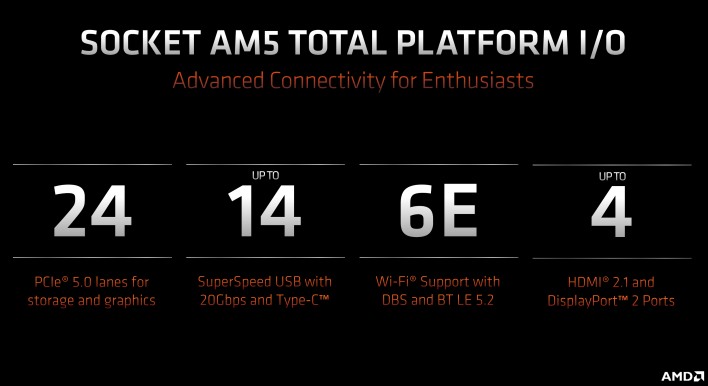AMD’s Masterful Zen 4 Motherboard Chipset Strategy, What It Enables And Why It Matters

Well, good news: AMD's Socket AM5 chipsets won't require a fan. That includes even the top-end X670E model as well as the standard X670 and midrange B650 chipsets. What they will require is a significant amount of room on the motherboard, as well as a sizable passive heatsink. That's because both variants of X670 chipset are in fact a "chip set", with two separate dice.
This has actually been rumored for some time, but most folks expected that it would be two chiplets on a single package, much like AMD's Ryzen CPUs. Instead, as we can see in this screenshot from MSI's "Inside Computex 2022" live stream (embedded below), there are clearly two separate chips on the board in their own packages.
In the stream, MSI's Eric van Beurden and Michiel Berkhout went over AMD's announcements from Computex and then gave a rundown of the Socket AM5 boards that will be available from MSI at launch. As part of that discussion, they clarify that Socket AM5 has 28 PCIe lanes routed to it, and that normally, they'll be set up such that sixteen lanes go to a PCIe graphics slot, two M.2 sockets get four lanes each, and then the final four lanes are for the chipsets.
This raises some questions that weren't answered, such as exactly how all this will be wired. If the paired chipsets are wired up in parallel—that is, each chip getting two lanes—then latency will be equivalent across the chips, but bandwidth will be limited by the two-lane interface. (That said, PCIe 5.0 x2 is functionally equivalent to PCIe 4.0 x4, which is what X570 hooks up to.)
Alternatively, if they're wired up to the CPU socket in series, then that could have significant latency implications for the second chipset—although it would allow any single device on either chipset to connect to the CPU at a peak rate of 16 GB/sec.
Whatever the case, both X670 and X670E are using a pair of these chips, while B650 gets just one. That means B650 will only have half the available I/O compared to X670, but half of what AMD promised is probably plenty for most users. AMD's slide says that Socket AM5 can have up to 14 SuperSpeed USB ports, and some of those probably wire up directly to the CPU socket, which means rather than losing 7, you're probably losing just 5 or 6.
In the stream, MSI's Berkhout and Van Beurden also pointed out that MSI isn't planning any Mini-ITX boards for Socket AM5's launch. Between the enlarged CPU socket, the dual chipsets, and their need for big passive heatsinks to avoid a noisy fan, Berkhout says it's unlikely we will see many X670 or X670E boards on ITX. Instead, Mini-ITX Socket AM5 boards will likely stick with the single-chip B650.
As for why AMD would do something like this, well, it's really quite smart. Using a single chip across their product stack significantly simplifies logistics and planning, and slapping a pair of the chips on higher-end boards is a simple solution to expanding I/O. It's easy to imagine an enterprising motherboard vendor like Biostar using a PCIe switch to connect even more chipset dice for a specialized board with expansive I/O.



